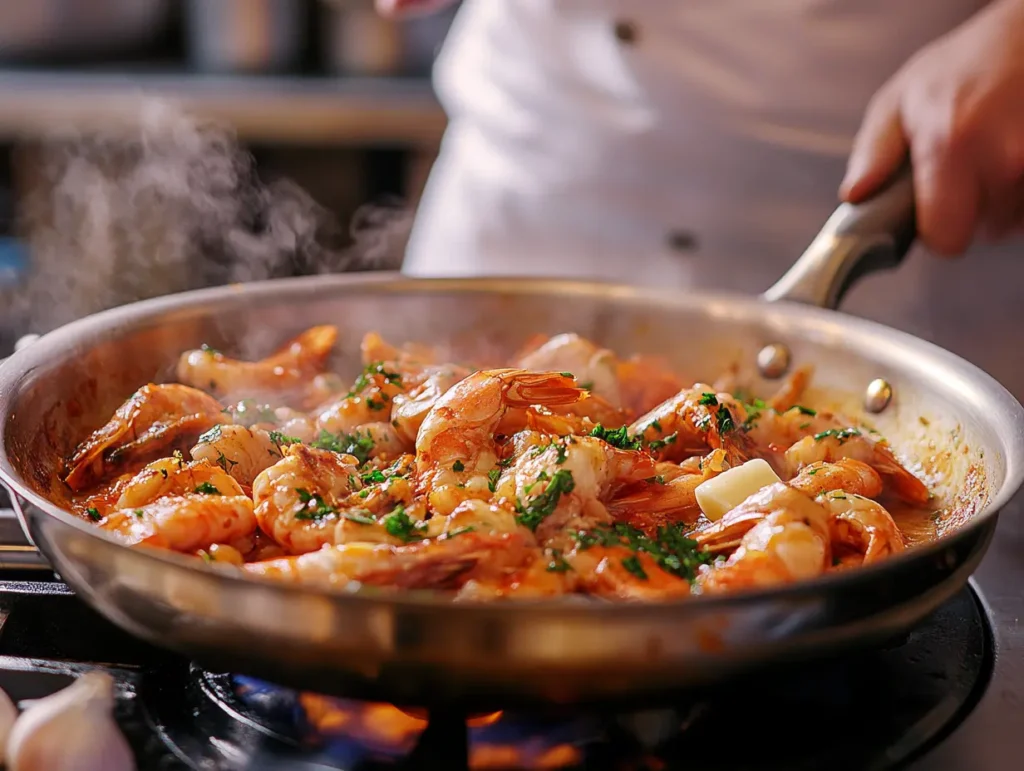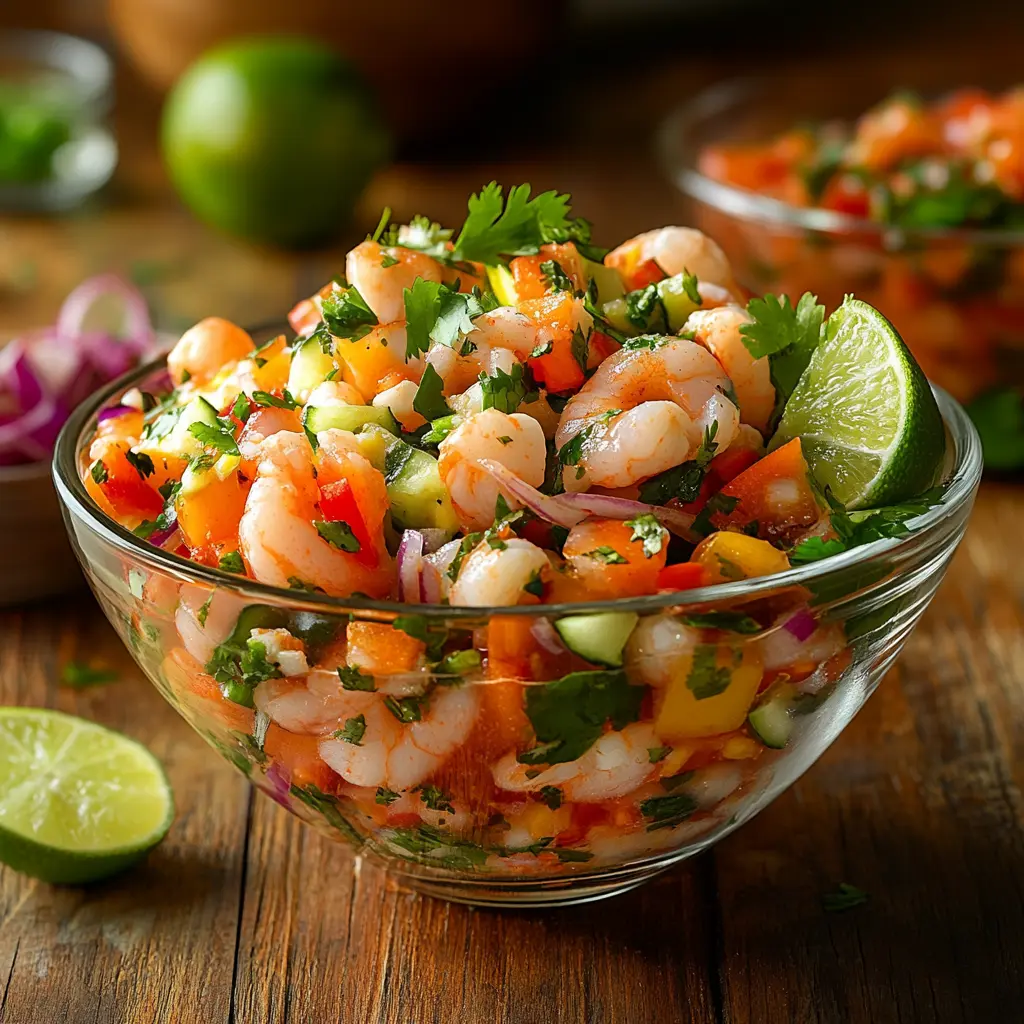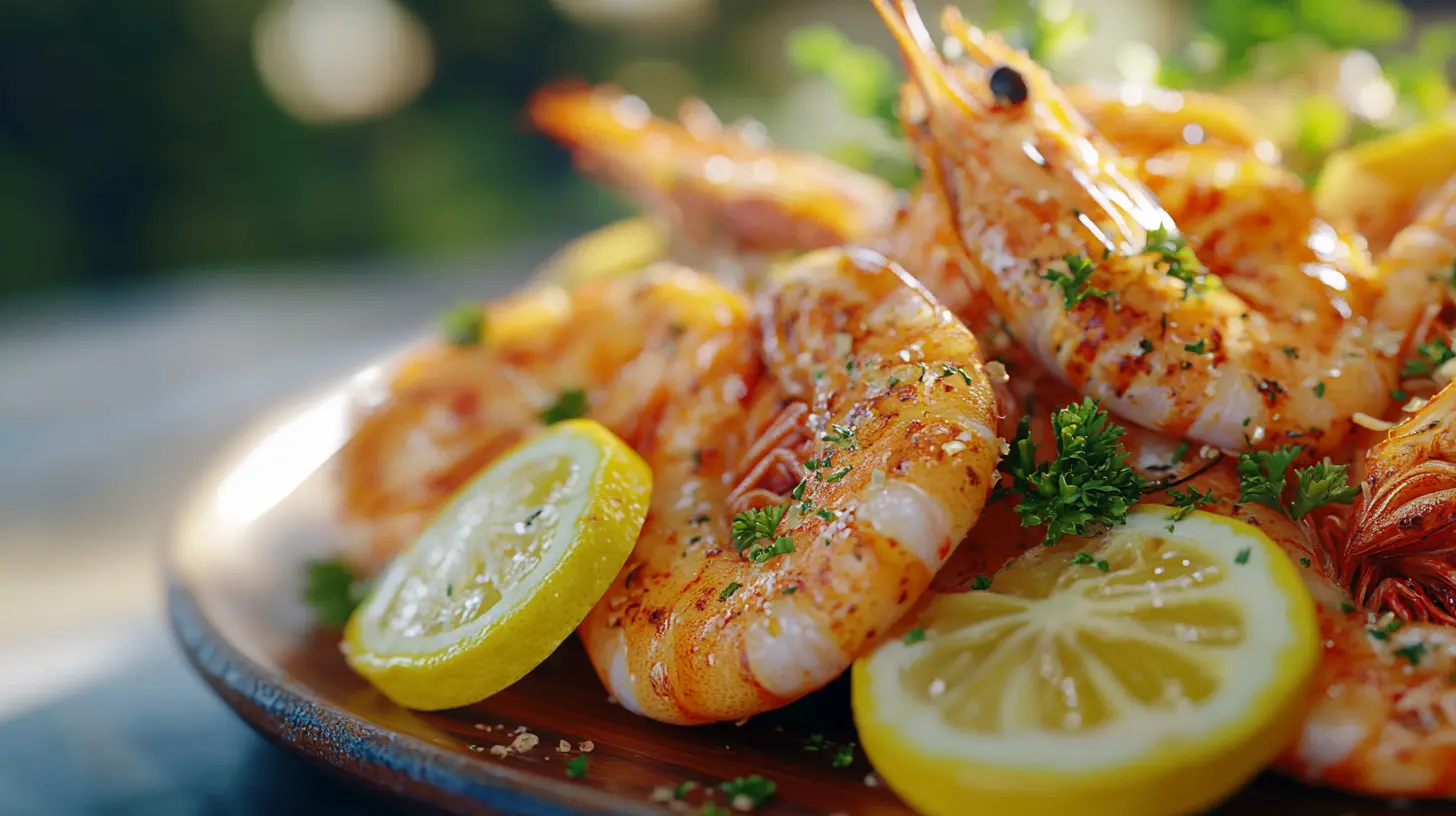If you’ve ever sat at a seafood restaurant and wondered, “What on earth is langostino? Is it shrimp? Is it lobster? Or is it something else entirely?” — you’re not alone! The debate over whether langostino is a shrimp or lobster has sparked curiosity among food lovers everywhere. Let’s dive into the fascinating world of langostino and uncover the truth behind this seafood mystery. 🦞🍤
Introduction to Langostino
Langostino is like the unicorn of the seafood world — unique, versatile, and often misunderstood. But before we clear up the confusion, let’s get to know it better.
Overview of Langostino
Langostino (plural: langostinos) is a Spanish word meaning ‘little lobster.’ Despite its name, langostino isn’t exactly what you’d think of when you picture a lobster. These small crustaceans are known for their delicate, sweet meat and are often used in dishes that call for shrimp or lobster. If you’re curious about what a langostino tail actually is, check out this detailed guide to langostino tails.
Origins and Habitat of Langostino
Langostinos are typically found in the cold waters of the Pacific Ocean, especially near Chile and Peru. They thrive in these icy depths, where their meat develops its distinctive taste and texture. Fun fact: langostino season is brief, making it a prized catch for fishermen. 🌊
Why the Confusion Between Shrimp and Lobster?
Here’s where things get tricky. Langostino doesn’t neatly fit into the shrimp or lobster category. It’s technically a type of squat lobster — a relative of crabs and lobsters but not true lobsters. Its small size and lobster-like flavor often lead people to group it with shrimp or lobster. But scientifically, it’s in a class of its own.
Langostino vs. Shrimp
Okay, so if langostino isn’t exactly lobster, could it be shrimp? Let’s break down the differences.
Physical Differences
Shrimp are long and slender, with straight tails that curl when cooked. Langostinos, on the other hand, have a more compact body and a tail that resembles a tiny lobster. Think of langostino as shrimp’s more robust cousin.
Flavor Profile Comparisons
If you’ve ever tasted shrimp, you know it has a slightly salty, briny flavor. Langostino, however, leans toward sweetness, much like lobster meat. It’s like comparing a crisp apple to a ripe peach — both delicious but distinctly different.
“Langostino’s flavor is often described as a perfect cross between shrimp and lobster, making it an excellent choice for seafood lovers.” 🦐🦞
Culinary Uses of Langostino and Shrimp
Shrimp is a seafood staple, found in everything from pasta to stir-fries. Langostino, with its delicate flavor, is perfect for dishes like seafood bisque, tacos, or even as a pizza topping. Pro tip: langostino meat holds up well in creamy sauces, adding a luxurious touch to any recipe. If you’re looking for inspiration on how to cook langostino, check out this collection of langostino tail recipes.
Langostino vs. Lobster
If langostino isn’t shrimp, could it actually be lobster in disguise? Let’s investigate.
Key Similarities
Langostino and lobster share a few traits: both have a sweet, succulent taste and firm texture. They’re often used interchangeably in recipes, especially when lobster is out of budget.
Differences in Texture and Taste
While lobster meat is firmer and richer, langostino has a more delicate texture. Think of lobster as the bold espresso and langostino as the smooth latte of the seafood world. ☕
Nutritional Comparisons
Here’s a quick look at the nutritional differences between langostino and lobster:
| Nutrient | Langostino (100g) | Lobster (100g) |
|---|---|---|
| Calories | 70 | 89 |
| Protein (g) | 15 | 19 |
| Fat (g) | 0.5 | 1.5 |
| Omega-3 (mg) | 100 | 150 |
Langostino is lower in calories and fat, making it a lighter option for those watching their diet. In fact, you might be surprised to learn just how healthy langostino tails can be—here’s a full breakdown of their nutritional benefits: Are langostino tails healthy?
The Culinary Appeal of Langostino
Langostino isn’t just a seafood oddity — it’s a star ingredient in kitchens worldwide.
Popular Dishes Featuring Langostino
Ever tried langostino pasta or langostino ceviche? These dishes highlight its sweet flavor and tender texture. Restaurants often use langostino meat in lobster rolls or chowders, offering a more affordable alternative to lobster.
Can Langostino Be Substituted for Lobster in Recipes?
Absolutely! Langostino can step in for lobster in most dishes. Whether it’s a rich bisque or a creamy mac and cheese, langostino delivers all the indulgence without breaking the bank.
“Langostino meat is like lobster’s more approachable cousin — luxurious yet affordable.” 🍽️
Common Questions About Langostino
Before we wrap up Part 1, let’s address some burning questions.
Is Langostino a Healthy Seafood Choice?
Yes! With its high protein and low fat content, langostino is a great choice for a healthy diet. Plus, it’s rich in essential nutrients like omega-3 fatty acids, which are good for your heart.
Sustainability and Ethical Considerations
Langostino fisheries are generally well-managed, making it a sustainable choice. However, always check for certifications like MSC (Marine Stewardship Council) when buying seafood.
Challenges and Controversies
Langostino may be delicious, but it’s not without its share of issues. From mislabeling in the seafood industry to legal debates, there’s more to this little crustacean than meets the eye.
Mislabeling of Langostino in the Seafood Industry
One of the biggest challenges with langostino is how it’s marketed. Ever ordered “lobster bisque” at a restaurant and wondered why it tasted a bit… different? Chances are, you were served langostino instead of lobster.
Restaurants and suppliers sometimes use langostino as a cost-effective substitute for lobster, but they don’t always label it clearly. This leads to confusion and, in some cases, accusations of fraud.
“Always ask your server about the ingredients if you want to be sure you’re getting true lobster meat.”
Consumer Confusion in Restaurants
Langostino’s versatility is part of the problem. Because it works well in lobster and shrimp recipes, it often sneaks onto menus under ambiguous names like “lobster bites” or “seafood medley.” While it’s a fantastic ingredient, transparency is key to avoiding disappointed diners.
Addressing the Legal Definitions of Langostino
The legal definition of langostino varies by country. In the U.S., langostino can’t be labeled as “lobster” unless it’s clarified that it’s not the true lobster species. This distinction is important for accurate labeling and consumer trust.
How to Cook Langostino at Home

Cooking langostino is a breeze, even for beginners. Its delicate flavor and tender meat make it an excellent addition to many dishes.
Easy Langostino Recipes
Here are some simple and delicious ways to enjoy langostino at home:
- Garlic Butter Langostino: Sauté langostino meat with garlic, butter, and parsley for a quick and flavorful appetizer. 🍴
- Langostino Tacos: Swap shrimp for langostino in your favorite taco recipe. Add avocado, salsa, and a squeeze of lime for a fresh twist.
- Langostino Alfredo: Toss langostino into creamy Alfredo sauce and serve over fettuccine for a decadent pasta dish.
Tips for Buying and Storing Langostino
Buying langostino is easy if you know what to look for. Here are some tips:
- Frozen vs. Fresh: Most langostino is sold frozen due to its short shelf life. Frozen meat retains its flavor and texture when thawed properly.
- Check for Quality: Look for langostino with a firm texture and a mild, sweet smell. Avoid any that appear slimy or have a strong fishy odor.
- Storage: Store frozen langostino in the freezer until ready to use. Once thawed, cook it within 1-2 days.
“When preparing langostino, think of it as you would shrimp or lobster — quick cooking methods like sautéing or steaming work best.”
Langostino’s Role in Global Cuisine

Langostino may not be a household name everywhere, but it has made its mark in various cuisines around the world.
Influence in Mediterranean Dishes
In Mediterranean cooking, langostino often features in stews, pastas, and risottos. Its sweet flavor pairs beautifully with olive oil, garlic, and fresh herbs. If you’ve ever had a Spanish seafood paella, there’s a good chance it included langostino.
Langostino in Latin American Cooking
In Latin America, langostino is a star ingredient in dishes like ceviche and empanadas. Its tender meat absorbs the bright flavors of lime, chili, and cilantro, creating a mouthwatering experience.
Health Benefits and Risks of Eating Langostino
Eating langostino isn’t just a treat for your taste buds — it’s good for your body too. However, as with any food, there are pros and cons.
Omega-3 Content and Heart Health Benefits
Langostino is an excellent source of omega-3 fatty acids, which are known to support heart health and reduce inflammation. A serving of langostino can help you meet your daily omega-3 needs.
Allergy Risks and Safety Precautions
As with other shellfish, langostino can trigger allergic reactions in some people. If you’re allergic to shrimp, lobster, or crab, you should avoid langostino to stay on the safe side.
Frequently Asked Questions
Let’s tackle some common questions about langostino:
Is Langostino Shrimp or Lobster?
Langostino is neither true shrimp nor true lobster. It’s a unique crustacean in the squat lobster family, with its own distinct characteristics.
What’s the Difference Between Lobster and Langoustine?
Lobster is a large crustacean with firm, rich meat, while langoustine (another name for langostino) is smaller and has a more delicate flavor.
Are Langostinos Good to Eat?
Absolutely! Langostinos are a delicious and versatile seafood option, offering a sweet, lobster-like flavor without the high price tag.
Can You Substitute Langostino for Lobster?
Yes! Langostino works wonderfully as a lobster substitute in recipes like bisque, mac and cheese, or seafood rolls.
Sustainability and Ethical Considerations
Seafood sustainability is a hot topic, and langostino is no exception. Choosing langostino responsibly ensures that future generations can enjoy this delicious crustacean without harming the environment.
Langostino Fisheries and Sustainability
The good news is that langostino fisheries are generally well-managed, particularly in regions like Chile and Peru, where they’re carefully regulated. These fisheries use sustainable practices to prevent overfishing and protect marine ecosystems. By supporting sustainable langostino, you’re not just enjoying great seafood—you’re helping the planet. 🌍
“Look for labels like MSC (Marine Stewardship Council) certification to ensure the langostino you’re buying is sustainably sourced.”
Ethical Concerns in the Seafood Industry
While langostino itself is often responsibly harvested, the broader seafood industry faces challenges like bycatch (the accidental capture of non-target species) and habitat destruction. Choosing seafood from ethical suppliers who prioritize eco-friendly methods can make a big difference.
Health Benefits of Langostino
Langostino isn’t just tasty—it’s packed with nutrients that can support your overall health.
High Protein, Low Fat
Langostino is an excellent source of lean protein, which helps build and repair tissues. With less than 1 gram of fat per serving, it’s a smart choice for those watching their calorie intake.
Rich in Vitamins and Minerals
Here’s a breakdown of the nutritional benefits of langostino per 100g serving:
| Nutrient | Amount | Benefits |
|---|---|---|
| Calories | 70 | Low-calorie option for healthy diets. |
| Protein (g) | 15 | Supports muscle growth and repair. |
| Omega-3 Fatty Acids | 100 mg | Promotes heart health and reduces inflammation. |
| Vitamin B12 | 0.5 mcg | Boosts energy and supports brain function. |
| Selenium | 40 mcg | Aids in immune function and thyroid health. |
“Langostino is like nature’s multivitamin, offering a balance of essential nutrients without the guilt.”
Low in Mercury
Unlike some seafood, langostino is low in mercury, making it a safe choice for regular consumption—even for pregnant women and children, when eaten in moderation.
Culinary Versatility
Langostino’s sweet, delicate flavor and tender texture make it a star ingredient in kitchens worldwide. Let’s explore how you can use it to elevate your meals.
Creative Langostino Recipes
Feeling adventurous in the kitchen? Here are some unique ways to incorporate langostino into your cooking:
- Langostino Risotto: Add langostino to creamy risotto with Parmesan and a hint of lemon for a sophisticated dish.
- Langostino Pizza: Sprinkle langostino over a white pizza base with mozzarella, garlic, and arugula. 🍕
- Langostino Stir-Fry: Toss langostino with vegetables, soy sauce, and sesame oil for a quick and healthy meal.
Pairing Langostino with Flavors
Langostino shines when paired with fresh, simple ingredients. Think garlic, lemon, butter, and fresh herbs. Its mild sweetness complements bold flavors, making it a versatile addition to both traditional and modern recipes.
Langostino’s Place in a Balanced Diet
Including langostino in your diet isn’t just about taste—it’s about balance. Here’s why it’s a smart choice for your meal plan.
Heart-Healthy Omega-3s
Omega-3 fatty acids in langostino help reduce cholesterol levels and support cardiovascular health. Including seafood like langostino in your diet 2-3 times a week can provide these benefits without excessive fat or calories.
Ideal for Weight Management
With only 70 calories per 100g, langostino is a low-calorie, high-protein food that keeps you full without overloading on carbs or fats. It’s perfect for anyone looking to maintain or lose weight.
“Langostino is the ultimate guilt-free indulgence—it’s like having your cake and eating it too, but in seafood form.”
Conclusion
So, is langostino a shrimp or lobster? The answer is neither—langostino is a unique crustacean with its own identity. While it shares similarities with both shrimp and lobster, it stands out for its sweet flavor, delicate texture, and incredible versatility.
Langostino offers a more affordable, sustainable, and nutritious alternative to traditional lobster. Whether you’re whipping up a creamy bisque, crafting elegant tacos, or simply enjoying it sautéed in butter, langostino is a seafood superstar.
Frequently Asked Questions
Let’s wrap up with answers to some common langostino queries.
Is Langostino Shrimp or Lobster?
Langostino is neither shrimp nor true lobster. It belongs to the squat lobster family, a relative of crabs and lobsters.
What’s the Difference Between Lobster and Langoustine?
Lobster is larger and richer in flavor, while langoustine (langostino) is smaller and sweeter, with a delicate texture.
Are Langostinos Good to Eat?
Absolutely! Langostinos are delicious, versatile, and nutritious, making them a fantastic choice for seafood lovers.
Can You Substitute Langostino for Lobster?
Yes, langostino is an excellent substitute for lobster in dishes like bisque, pasta, or even lobster rolls.
Final Thoughts
Langostino might be smaller than its lobster and shrimp counterparts, but it’s no less mighty in flavor and versatility. Whether you’re a seasoned seafood enthusiast or a curious foodie, give langostino a try—you might just find your new favorite ingredient. 🦞🍤
With that, our deep dive into langostino is complete. From its origins and nutrition to its sustainability and culinary appeal, langostino proves itself to be a hidden gem in the world of seafood. Go ahead, grab a fork, and discover the magic of langostino for yourself! 😊

Langostino
Ingredients
Method
- Thaw the langostino meat if frozen and pat dry with a paper towel.
- Mince the garlic and chop the parsley.
- In a large skillet, melt the butter over medium heat.
- Add minced garlic and sauté until fragrant, about 1-2 minutes.
- Add the langostino meat to the skillet and cook for about 5-7 minutes, stirring occasionally, until the meat is opaque and cooked through.
- Remove from heat and squeeze fresh lime juice over the dish. Garnish with parsley before serving.
